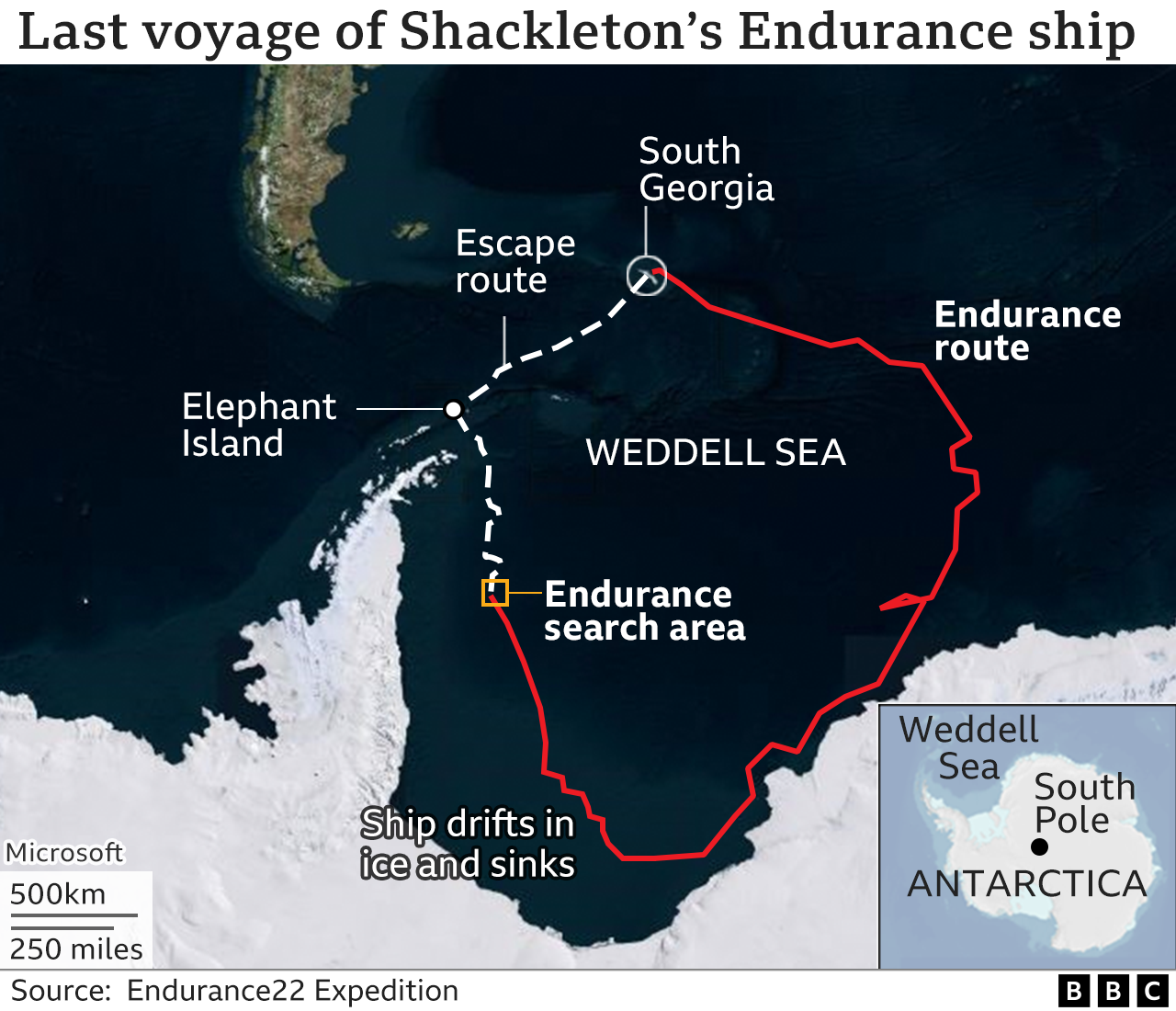Endurance: Shackleton's lost ship is found in Antarctic
Scientists have found and filmed one of the greatest ever undiscovered shipwrecks 107 years after it sank.
The Endurance, the lost vessel of Antarctic explorer Sir Ernest Shackleton, was found at the weekend at the bottom of the Weddell Sea.
The ship was crushed by sea-ice and sank in 1915, forcing Shackleton and his men to make an astonishing escape on foot and in small boats.
Video of the remains show Endurance to be in remarkable condition.
Even though it has been sitting in 3km (10,000ft) of water for over a century, it looks just like it did on the November day it went down.
Its timbers, although disrupted, are still very much together, and the name - Endurance - is clearly visible on the stern.
"Without any exaggeration this is the finest wooden shipwreck I have ever seen - by far," said marine archaeologist Mensun Bound, who is on the discovery expedition and has now fulfilled a dream ambition in his near 50-year career.
"It is upright, well proud of the seabed, intact, and in a brilliant state of preservation," he told BBC News.
The project to find the lost ship was mounted by the Falklands Maritime Heritage Trust (FMHT), using a South African icebreaker, Agulhas II, and equipped with remotely operated submersibles.
The mission's leader, the veteran polar geographer Dr John Shears, described the moment cameras landed on the ship's name as "jaw-dropping".
"The discovery of the wreck is an incredible achievement," he added.
"We have successfully completed the world's most difficult shipwreck search, battling constantly shifting sea-ice, blizzards, and temperatures dropping down to -18C. We have achieved what many people said was impossible."
Where was the ship found?
Endurance was spotted in the Weddell Sea at a depth of 3,008m.
For over two weeks, the subs had combed a predefined search area, investigating various interesting targets, before finally uncovering the wreck site on Saturday - the 100th anniversary of Shackleton's funeral. The days since the discovery have been spent making a detailed photographic record of the timbers and surrounding debris field.
The wreck itself is a designated monument under the international Antarctic Treaty and must not be disturbed in any way. No physical artefacts have therefore been brought to the surface.
What could the subs see?
The ship looks much the same as when photographed for the last time by Shackleton's filmmaker, Frank Hurley, in 1915. The masts are down, the rigging is in a tangle, but the hull is broadly coherent. Some damage is evident at the bow, presumably where the descending ship hit the seabed. The anchors are present. The subs even spied some boots and crockery.
"You can even see the ship's name - E N D U R A N C E - arced across its stern directly below the taffrail (a hand rail near the stern). And beneath, as bold as brass, is Polaris, the five-pointed star, after which the ship was originally named," said Mensun Bound.
"I tell you, you would have to be made of stone not to feel a bit squishy at the sight of that star and the name above," he added.
"You can see a porthole that is Shackleton's cabin. At that moment, you really do feel the breath of the great man upon the back of your neck."






Post a Comment